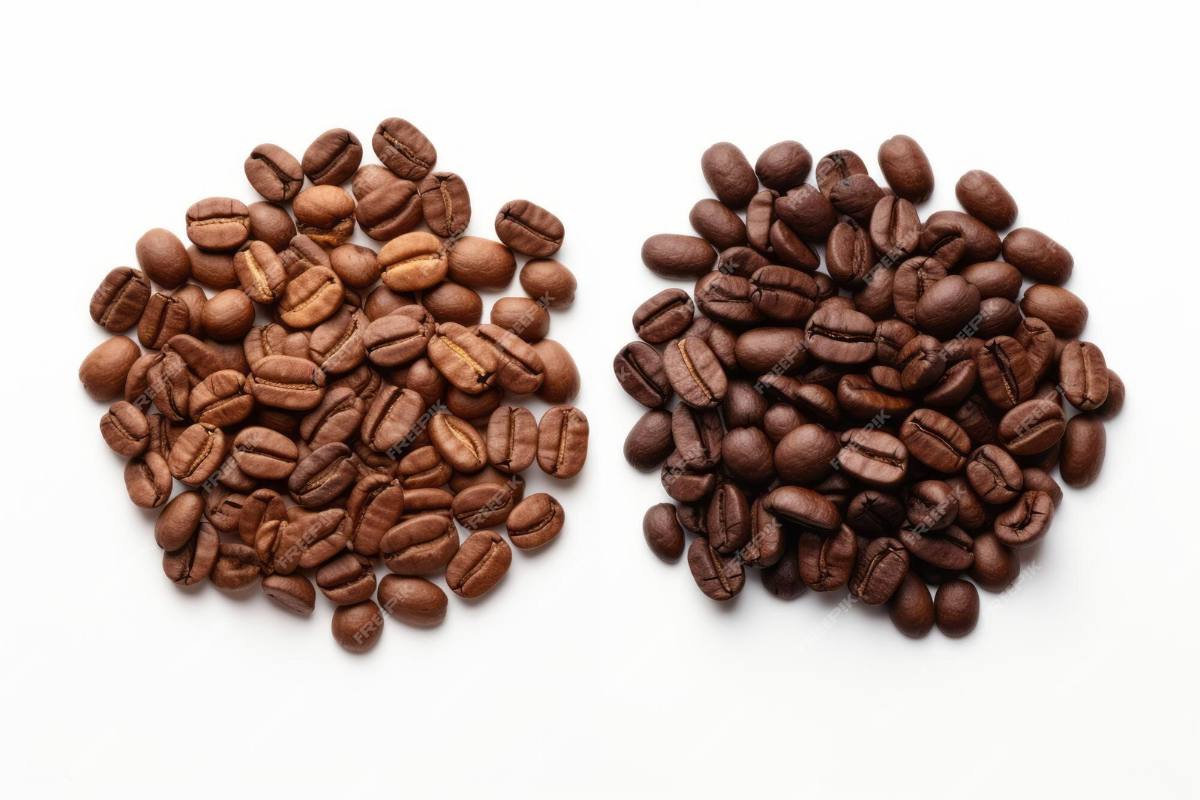When shopping for coffee, you’ve likely seen the labels “100% Arabica” or “Robusta blend.” But what do these names really mean? Arabica and Robusta are the two main types of coffee beans used around the world, and they’re fundamentally different in flavor, cultivation, and chemistry.
Understanding the difference can help you choose the right coffee for your taste, health preferences, and brewing method. Let’s break it all down.
What Are Arabica and Robusta?
Arabica (Coffea arabica) and Robusta (Coffea canephora) are two distinct species of the coffee plant. They account for over 95% of global coffee production, with Arabica making up about 60–70% and Robusta the remaining 30–40%.
Though they’re both “coffee,” they grow in different conditions and produce very different experiences in the cup.
Arabica: Smooth and Refined
Characteristics:
- Shape: Oval bean with a curved crease.
- Taste: Sweet, soft, with hints of fruit, floral, chocolate, or sugar.
- Aroma: Complex and often fragrant.
- Acidity: High (adds brightness and liveliness).
- Caffeine: 1.2–1.5%
- Cultivation: Grows at high altitudes (600–2,200 meters), sensitive to pests and frost.
Pros:
- Superior flavor and complexity.
- Widely used in specialty coffee and single-origin selections.
Cons:
- More expensive to grow and buy.
- Lower yield and more prone to diseases like coffee leaf rust.
Robusta: Strong and Bold
Characteristics:
- Shape: Rounder bean with a straight crease.
- Taste: Harsh, earthy, nutty, sometimes woody or rubbery.
- Aroma: Less fragrant.
- Acidity: Low
- Caffeine: 2.2–2.7% (almost double that of Arabica)
- Cultivation: Grows at lower altitudes (0–800 meters), highly resistant to pests and disease.
Pros:
- Cheaper and easier to grow.
- More crema in espresso due to high caffeine and oils.
- Longer shelf life.
Cons:
- Considered inferior in flavor by specialty coffee standards.
- Often associated with instant coffee or low-cost blends.
Side-by-Side Comparison
| Feature | Arabica | Robusta |
|---|---|---|
| Flavor | Sweet, fruity, acidic | Bitter, earthy, bold |
| Caffeine Content | 1.2–1.5% | 2.2–2.7% |
| Shape | Oval, curved crease | Round, straight crease |
| Growing Altitude | 600–2,200 meters | 0–800 meters |
| Pest Resistance | Low | High |
| Production Cost | High | Low |
| Popular Use | Specialty coffee | Instant coffee, espresso blends |
Which Should You Choose?
Choose Arabica if:
- You enjoy smooth, aromatic coffee with fruity or floral notes.
- You prefer light to medium roasts.
- You want a more premium experience.
Choose Robusta if:
- You like strong, bitter coffee.
- You want more caffeine per cup.
- You’re making espresso and want good crema.
The Role of Robusta in Espresso
Robusta is often used in espresso blends—not for cost-cutting, but because:
- It enhances crema.
- It adds body and bitterness to balance milk.
- It brings a caffeine kick.
Most Italian-style espressos contain 10–30% Robusta in their blends.
Arabica vs. Robusta in Price and Availability
- Arabica is often more expensive, not just due to flavor but also due to:
- Difficult growing conditions.
- Smaller yields.
- Higher labor costs.
- Robusta is more affordable, making it the go-to choice for:
- Instant coffee manufacturers.
- Mass-market blends.
- Regions where Arabica cannot grow.
Environmental Considerations
With climate change threatening high-altitude coffee regions, Robusta’s resilience may become a key advantage. Some researchers are exploring hybrid varieties that combine Arabica flavor with Robusta strength.
Additionally, Robusta uses fewer pesticides, thanks to its natural resistance—making it a more sustainable choice in certain contexts.
Health Impacts
- Caffeine: Robusta has more, which may benefit those seeking energy—but could be too much for sensitive drinkers.
- Chlorogenic Acids (CGAs): Robusta also has more of these antioxidants, though they can contribute to bitterness.
- Stomach Sensitivity: Arabica’s lower caffeine and acidity often make it gentler on the digestive system.
Final Thoughts: It’s Not About “Better”—It’s About Preference
Instead of thinking of Arabica as superior and Robusta as inferior, it’s more helpful to view them as different tools for different results. Some drinkers love Robusta for its strength and bite. Others treasure Arabica for its layered aroma and delicate complexity.
Try both. Compare a 100% Arabica light roast to a dark espresso blend with Robusta. You’ll gain a deeper appreciation of the diversity coffee offers—and you might discover a new favorite.
